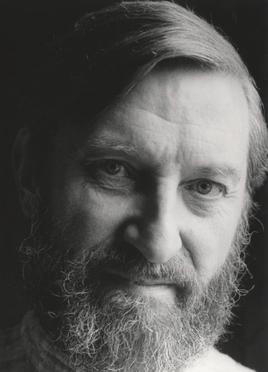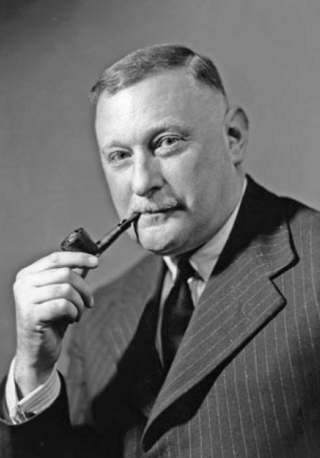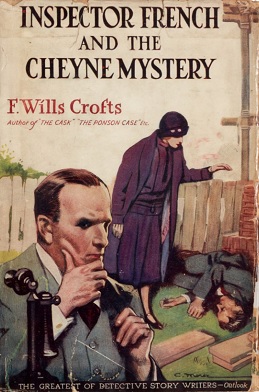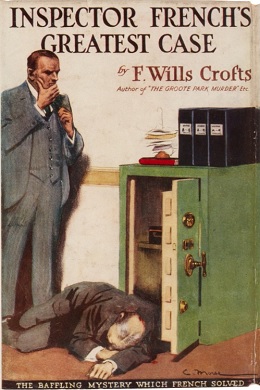Related Research Articles

Detective fiction is a subgenre of crime fiction and mystery fiction in which an investigator or a detective—whether professional, amateur or retired—investigates a crime, often murder. The detective genre began around the same time as speculative fiction and other genre fiction in the mid-nineteenth century and has remained extremely popular, particularly in novels. Some of the most famous heroes of detective fiction include C. Auguste Dupin, Sherlock Holmes, Kogoro Akechi, and Hercule Poirot. Juvenile stories featuring The Hardy Boys, Nancy Drew, and The Boxcar Children have also remained in print for several decades.
Strong Poison is a 1930 mystery novel by Dorothy L. Sayers, her fifth featuring Lord Peter Wimsey and the first in which Harriet Vane appears.

Ellery Queen is a pseudonym created in 1928 by the American detective fiction writers Frederic Dannay (1905–1982) and Manfred Bennington Lee (1905–1971). It is also the name of their main fictional detective, a mystery writer in New York City who helps his police inspector father solve baffling murder cases. From 1929 to 1971, Dannay and Lee wrote around forty novels and short story collections in which Ellery Queen appears as a character.

Death in the Clouds is a work of detective fiction by British writer Agatha Christie, published in 1935. It features the Belgian detective Hercule Poirot and Chief Inspector Japp. It is a "closed circle" murder mystery: the victim is a passenger on a cross-Channel aircraft flight, and the perpetrator can only be one of eleven fellow-passengers and crew.
The police procedural, police show, or police crime drama is a subgenre of procedural drama and detective fiction that emphasises the investigative procedure of police officers, police detectives, or law enforcement agencies as the protagonists, as contrasted with other genres that focus on non-police investigators such as private investigators.

Edith Caroline Rivett was a British crime writer, who wrote under the pseudonyms E. C. R. Lorac, Carol Carnac and Mary Le Bourne during the golden age of detective fiction.

Henry Reymond Fitzwalter Keating was an English crime fiction writer most notable for his series of novels featuring Inspector Ghote of the Bombay CID.

Cecil John Charles Street, better known as John Street, was a major in the British Army and a crime fiction novelist.
Gwendoline Butler, née Williams, was a British writer known for her mystery fiction and romance novels. She began her writing career in 1956 and also wrote under the pseudonym Jennie Melville. Credited with inventing the "woman's police procedural," Butler gained recognition for her works, especially the Inspector John Coffin series penned under her own name, and the Charmian Daniels series published under the Jennie Melville pseudonym.
Kenneth Martin Edwards is a British crime novelist, whose work has won multiple awards including lifetime achievement awards for his fiction, non-fiction, short fiction, and scholarship in the UK and the United States. In addition to translations into various European languages, his books have been translated into Japanese, Chinese, Korean, and Taiwanese. As a crime fiction critic and historian, and also in his career as a solicitor, he has written non-fiction books and many articles. He is the current President of the Detection Club and in 2020 was awarded the Crime Writers' Association's Diamond Dagger, the highest honour in British crime writing, in recognition of the "sustained excellence" of his work in the genre.
Cozy mysteries, are a sub-genre of crime fiction in which sex and violence occur offstage, the detective is an amateur sleuth, and the crime and detection take place in a small, socially intimate community. Cozies thus stand in contrast to hardboiled fiction, in which more violence and explicit sexuality are central to the plot. The term "cozy" was first coined in the late 20th century when various writers produced work in an attempt to re-create the Golden Age of Detective Fiction.

The Thieves' Labyrinth is the third book in a series of four Victorian detective novels by author James McCreet, published in May 2011. It continues the adventures of a set of characters established in the first book, The Incendiary's Trail, namely: George Williamson, Albert Newsome, Noah Dyson, Benjamin and John Cullen.

Chief Inspector Armand Gamache is the main character in a series of mystery novels written by Canadian author Louise Penny. The series is set around the life of Chief Inspector Armand Gamache of Sûreté du Québec, the provincial police force for Quebec. Books in the series have been nominated for and received numerous awards.
Louise Ross, known by her pen name LJ Ross, is the author of the DCI Ryan, Summer Suspense and Doctor Gregory series of mystery thrillers. Her debut novel, Holy Island, was released in January 2015 and, by May, it had reached number one in the Amazon UK chart. Its sequel, Sycamore Gap, released in September 2015, is also a UK bestseller. She released further books in the DCI Ryan series, amassing more than twenty UK No. 1s and selling over ten million copies.
Inspector Joseph French is a fictional British police detective created by Irish author Freeman Wills Crofts. French was a prominent detective from the Golden Age of Detective Fiction, appearing in twenty-nine novels and a number of short stories between 1924 and 1957. The character was introduced in the 1924 novel Inspector French's Greatest Case, where he investigates a fatal diamond robbery in Hatton Garden. The series relied largely on puzzle mysteries.

The Cheyne Mystery is a 1926 mystery thriller novel by Freeman Wills Crofts. It is the second in his series of novels featuring Inspector French, a prominent figure of the Golden Age of Detective Fiction. It followed on from his debut in Inspector French's Greatest Case, in which Crofts introduced a character who was more methodical and less flamboyant than many of the other great detectives who followed in the wake of Sherlock Holmes.

Inspector French's Greatest Case is a 1924 mystery detective novel by Freeman Wills Crofts. It is the first in his series of novels featuring Inspector Joseph French, a Scotland Yard detective of the Golden Age known for his methodical technique. Like much of the following series the plot mixes the traditional form of the puzzle mystery with that of a police procedural. French has to carefully study railway and shipping timetables and crack a cipher in order to solve his case.

Shot at Dawn is a 1934 detective novel by John Rhode, the pen name of the British writer Cecil Street. It is the nineteenth in his long-running series of novels featuring Lancelot Priestley, a Golden Age armchair detective.
References
- ↑ Michael Jecks, British Crime Writing vol. 1, p. 239.
- ↑ Philip Scowcroft, British Crime Writing vol. 2, p. 794.
- ↑ "Review of Arsenic Labyrinth". Eurocrime. March 2007.
- ↑ "Review of Coffin Trail". March 2009.
- ↑ "Review of Cipher Garden". BooksPlease. April 2009.